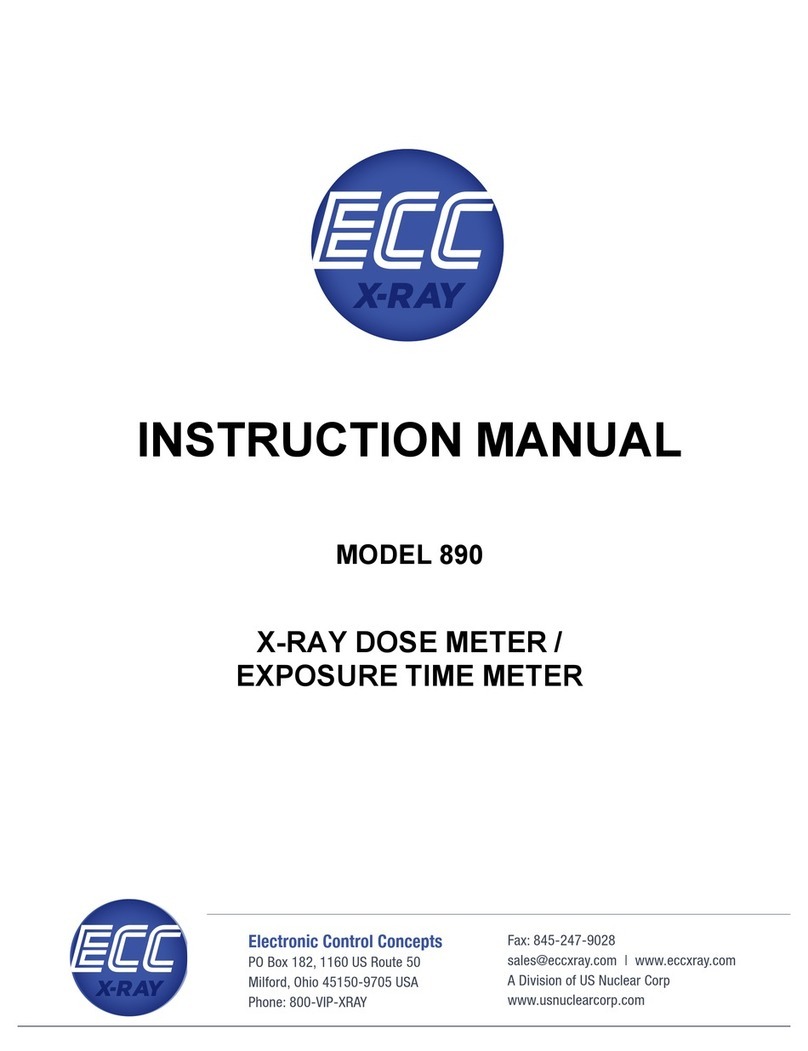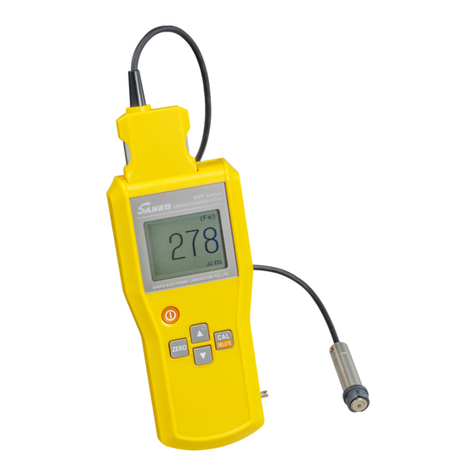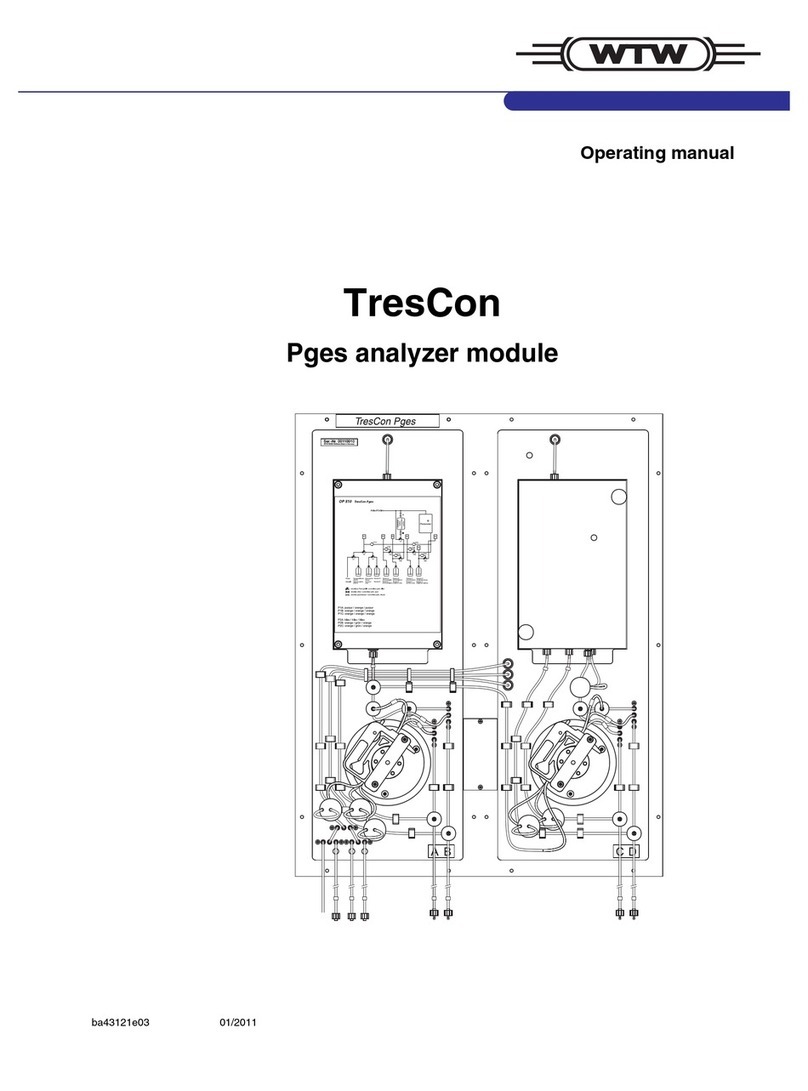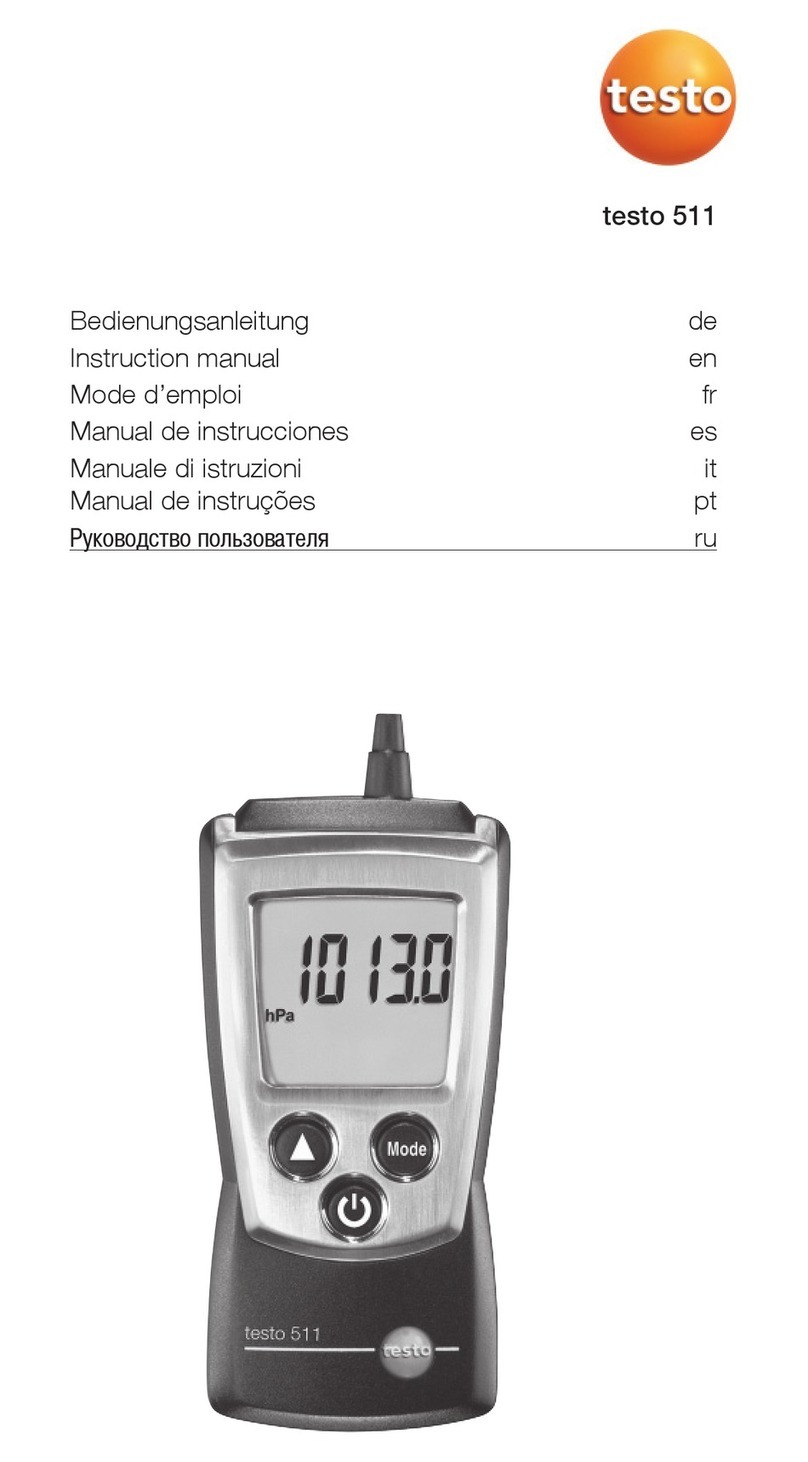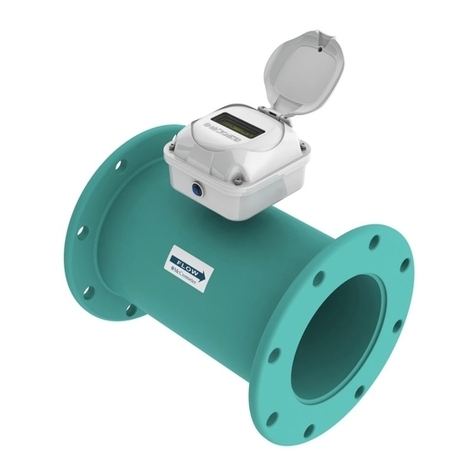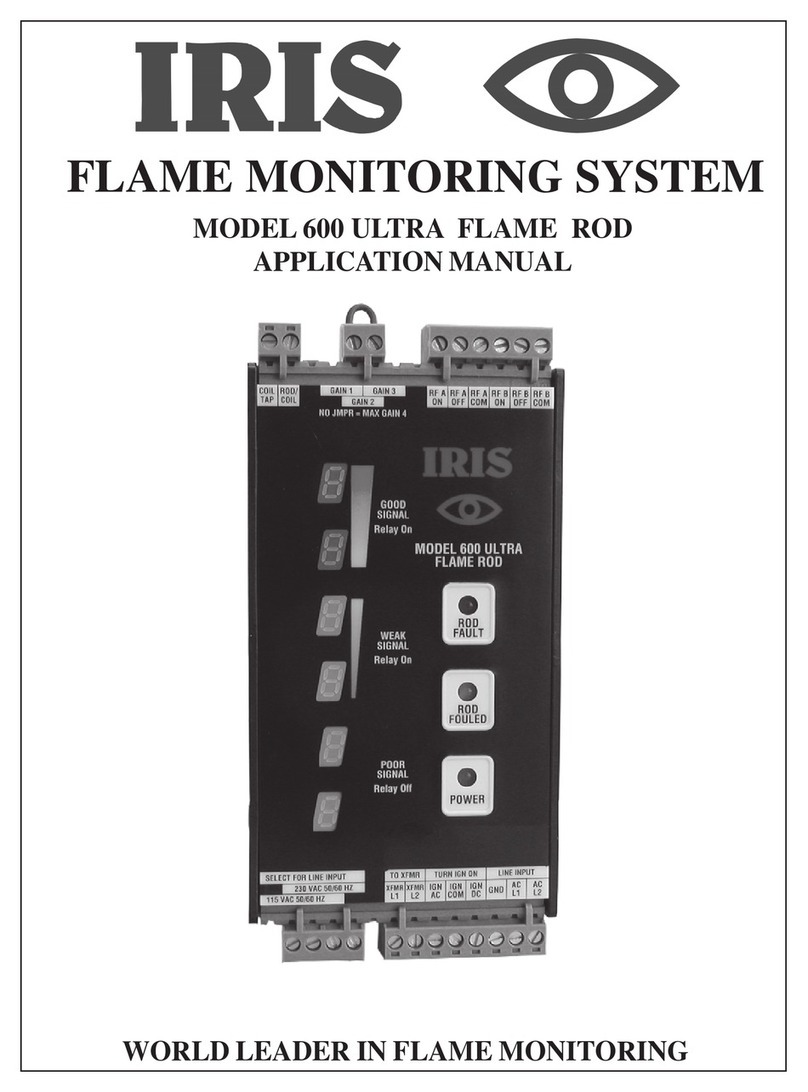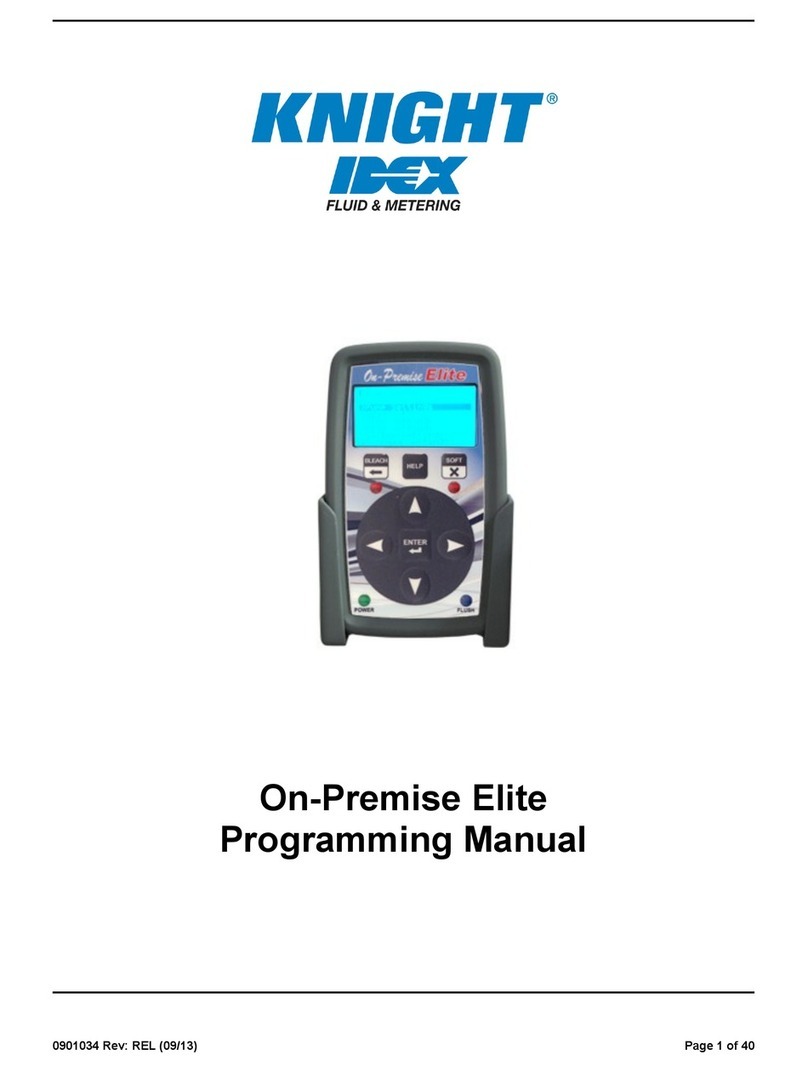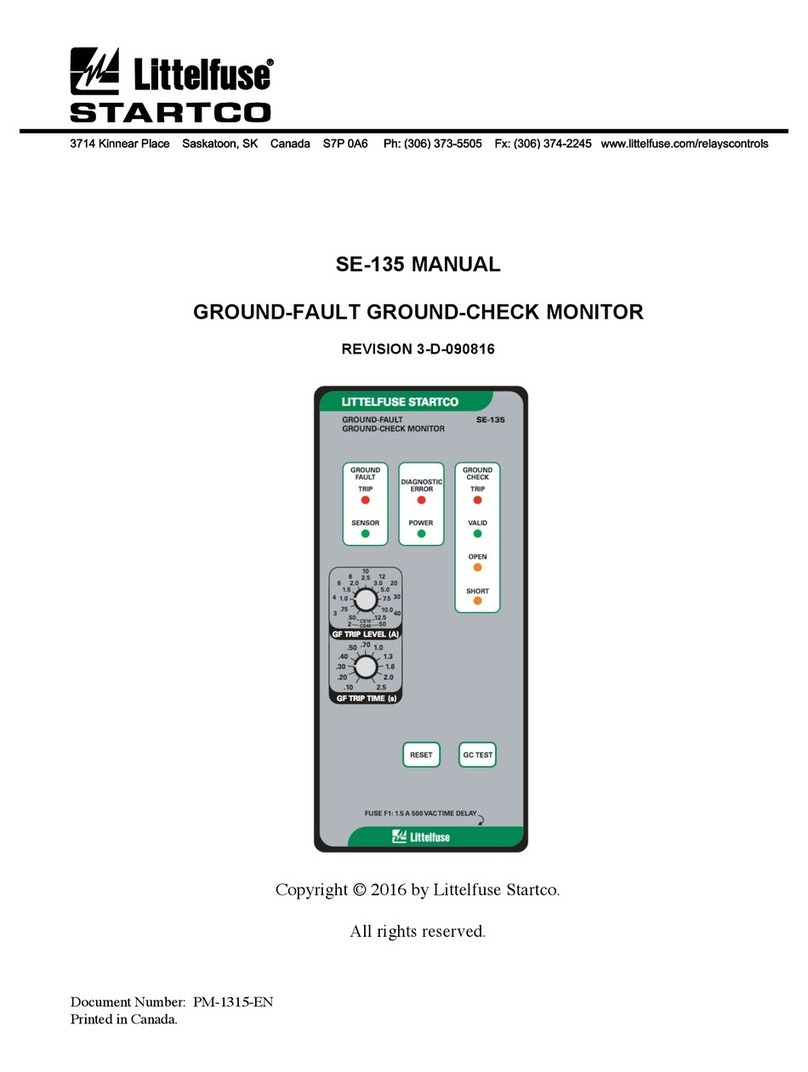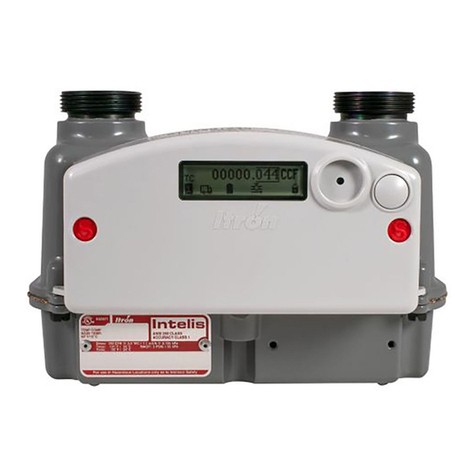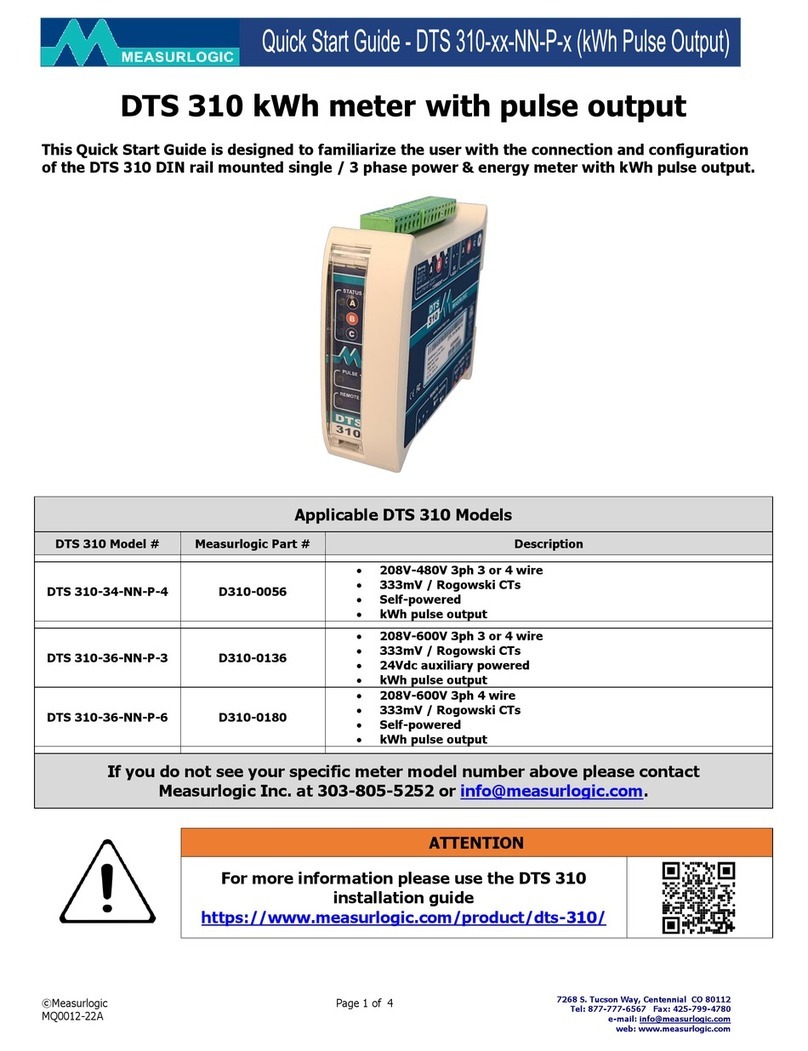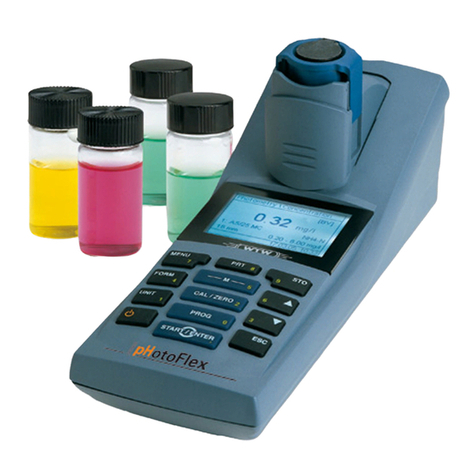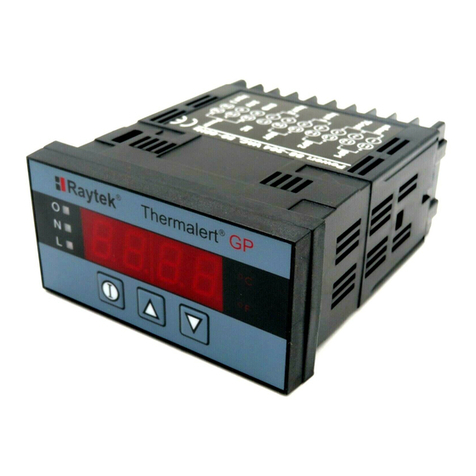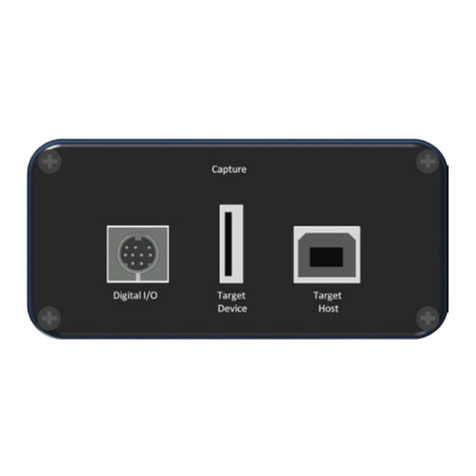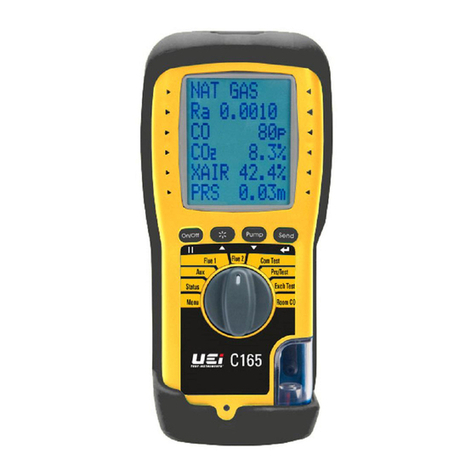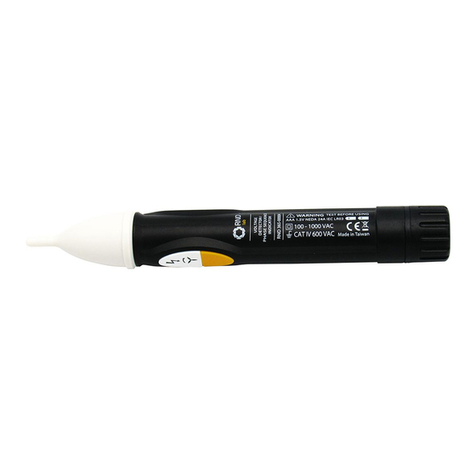Electronic Control Concepts 8700 User manual

- 2
Page 2
OVERVIEW
This instruction manual applies to Electronic Control Concepts Model 8700 for Serial
Numbers 7001 and above. Significant design improvements have been made to this
version of the Model 8700 including:
1)Ability to measure pulsed x-ray time in milliseconds as well as count pulses.
2)Improved sensitivity which means that we can measure exposure time of very low
level x-rays.
3)Improved x-ray intensity range allows use with high energy x-rays.
4)Exposure time accuracy is now 1%.
5)Multi character display makes operation and understanding of results easier.
DESCRIPTION
The ECC Model 8700 X-ray Timer/Counter is used to measure the duration of radiation
output produced by X-ray generators. The ECC Model 8700 is a solid-state, digital in-
strument designed specifically for service personnel in assessing the performance of
radiation generator timing controls. The instrument is a noninvasive instrument, which
samples the radiation beam of x-rays.
The Model 8700 can be used as follows:
1) To count the number of x-ray pulses produced by half-wave and full-wave recti-
fied machines. It will count the output pulses typically 60 pulses per second for
half-wave rectified machines or 120 pulses per second for full-wave. Dental x-
ray machines are usually half-wave rectified.
2) To measure the exposure time of x-ray pulses produced by half-wave and full-
wave x-rays. This is a new function, and is the only Exposure Time Meter avail-
able with this capability.
3) To measure the length of radiation output when the x-ray output is steady state
such that "pulsing" does not exist. X-rays that generate steady outputs include
3-phase AC medical x-ray machines; capacitor discharge x-ray machines and
DC operated x-rays.
4) To measure the "on time" or relay contact closure time by counting the number
of pulses of AC line voltage (90 to 130 VAC) via the front panel input jacks and
test leads.
The Model 8700 replaces not only mechanical impulse counters, but also other elec-
tronic counters. The small hand held size conveniently fits in a small toolbox, jacket
pocket or handbag.
There is no "Reset" button. The Model 8700 automatically resets at the beginning of
each exposure, holding the reading until the next exposure.

- 3
Page 3
The most convenient way of using the 8700 is to place it directly under the x-ray head,
step back, take the exposure and then read the exposure time in pulses or millisec-
onds.
It is important that the user be thoroughly familiar with the contents of this manual be-
fore performing any tests on radiation generating equipment. It is also imperative that
the user be thoroughly qualified, and familiar with safety precautions and other practic-
es relating to radiation generators.
GENERAL INSTRUCTIONS
Switch Settings
The front panel selector toggle switch on the Model 8700 has 3 positions, 'OFF',
'PULSES", and "MILLISECONDS'. The switch is OFF in the center position.
PULSES
When the switch is moved to the 'PULSES' position, the instrument will be used for
measuring (or counting) output pulses from half-wave or full-wave rectified machines as
well as AC line voltage pulses. Normally (in USA), each full second of exposure will
produce 60 pulses. An exposure of 2/10 second will read 12 for example. Refer to the
chart on page 5 for further illustration.
MILLISECONDS
With the switch in the 'MILLISECONDS' position, the instrument will measure the length
of time that a DC or 3-phase AC x-ray is on. The display reading will be in milliseconds
i.e. an exposure of 1 second will read 1000, an exposure of 2/10 second will read 200.
This switch position can also be used for measuring the exposure time of pulsed x-rays.
OFF
All power to the instrument is disconnected in the 'OFF' position. Set the switch to
'OFF' when not in use to conserve battery life. The center position is OFF.
Connections
When reading directly from an x-ray head, no connections are made to the instrument.
Point the x-ray head at the "target" area of the Model 8700. Take an exposure and
read the time on the display in pulses or milliseconds.
AC Input
Connect the test leads to the two input jacks on the front of the instrument. Since the
instrument counts AC pulses, the AC line must be switched by the relay that is in the
timer under test. A typical wiring configuration is shown in schematic form in Figure 1.
A typical wiring configuration for testing an ECC Model 8200A Timer is shown in Figure
2. When using the AC mode, the switch must be in the PULSE position.
The circuit for AC inputs is completely isolated from the rest of the instrument. No
damage to the instrument will occur if the probes are reversed. If the count is off by
one pulse, try reversing the leads.

- 4
Page 4
Relay
8700
Red
Black
Figure 1
Wiring for AC Pulse
Measurment
ADD JUMPER
1 2 3 4 5 6 7 8
Blk
W
ht Grn
BLK
RED
ACLINE
TO 8700
Model
8700
Connection
to
Model 8200A
Timer
FIGURE 2
Preheat Concern
Some x-ray machines emit low level radiation during the pre-heat cycle. The sensitive
detection circuit will respond to this spurious radiation, which should not be present. If
your measured exposure time is significantly higher than what is expected, the instru-
ment could be responding to preheat emission. To minimize the error from preheat ra-
diation, increase the distance from the x-ray source to the 8700 or put an aluminum fil-
ter over the front of the instrument.

- 5
Page 5
BATTERY
REPLACEMENT
The Model 8700 is supplied with one 9 Volt Alkaline battery. Replace the battery when
the "Lo Bat" indicator shows in the display. Any standard 9 Volt Alkaline battery can be
used in the 8700. To meet the battery life specification, please use a Duracell MN1604
Battery. This is the familiar “gold top” battery. To prolong battery life, turn the instru-
ment off when not in use.
To replace the battery, slide the battery compartment open on the bottom of the case.
Remove the old battery, and install the new battery.
This instrument measures and displays the actual battery voltage every time the unit is
switched on. The second line of the display momentarily shows B= X.XV. This gives
the operator an indication of how much battery life is left. When the battery voltage
drops below 5.8 Volts, a Low Battery warning will be displayed. Please change the bat-
tery as soon as possible.
We suggest removing the battery when shipping the instrument or if it will not be used
for a long period of time.
WARRANTY
Electronic Control Concepts warrants the Model 8700 X-ray Timer/Counter from defects
in materials and workmanship for a period of two years. There is no warranty on the
battery. ECC will replace or repair any Model 8700 during the first two years after
shipment that does not show obvious signs of abuse. Contact the factory as described
below.
CALIBRATION
We recommend yearly calibration, test and verification. ECC will test and issue calibra-
tion certificates. To return a unit for calibration, contact ECC as shown below under
Service Information. Please include a return address and either credit card information
or contact information so that we can get credit card information.
SERVICE
INFORMATION
If a unit should need service, please contact the factory by email or phone (see front
cover of this manual) to obtain a Return Materials Repair authorization. Please ship
with battery removed.
After obtaining an RMR number, ship the unit to:

- 6
Page
6
Electronic Control
Concepts
160 Partition Street
Saugerties, NY
12477

- 7
Page 7
EXPOSURE TIME CONVERSION CHART
Impulses
Time
in Seconds
Time
in Seconds
Time
in Seconds
1
0.02
0.02
0.01
2
0.03
0.04
0.02
3
0.05
0.06
0.03
4
0.07
0.08
0.03
5
0.08
0.1
0.04
6
0.1
0.12
0.05
7
0.12
0.14
0.06
8
0.13
0.16
0.07
9
0.15
0.18
0.08
10
0.17
0.2
0.08
15
0.25
0.3
0.13
20
0.33
0.4
0.17
25
0.42
0.5
0.21
30
0.5
0.6
0.25
35
0.58
0.7
0.29
40
0.67
0.8
0.33
45
0.75
0.9
0.38
50
0.83
1
0.42
60
1
1.2
0.5
70
1.17
1.4
0.58
80
1.33
1.6
0.67
90
1.5
1.8
0.75
100
1.67
2
0.83
120
2
2.4
1
150
2.5
3
1.25
180
3
3.6
1.5
200
3.33
4
1.67
240
4
4.8
2
60 Hz Line
50 Hz Line
Full Wave
USA, Canada
Europe
@ 60 Hz
The formulas for determining exposure time based on number of pulses is as follows:
Time (in seconds) = pulses / 60 for half wave x-ray in USA or Canada
Time (in seconds) = pulses / 120 for full wave x-ray in USA or Canada
Time (in seconds) = pulses / 50 for half wave x-ray in Europe and countries with 50 Hz
line.

- 8
Page 8
Model 8700 SPECIFICATIONS
Accuracy
AC Input / X-ray Pulse - +/- 1 Count
DC Input - 1% +/- 1 Count
o Measures at 50% of peak value
Sensitivity
AC Input - 90 VAC minimum
X-ray input - 40kVp, 3mA at 5 cm from top surface of case, pointed to target on
case.
Maximum Measurement Time
Pulses
o 65,536
o 18 minutes
Milliseconds
o 65,536
o 65.5 seconds
Display
0.21" (5.5mm) Character height,
2 lines by 12 Characters, Liquid Crystal
Power
9 Volt Battery
Low Battery Indicator
"Low Battery" Appears in display when battery voltage reaches 5.8 Volts +/- 0.2
Volt.
Size
80 X 147 X 40 mm
3.15 X 5.8 X 1.6 inches
Battery Life
48 Hours minimum
o With Duracell MN1604 Alkaline or equivalent
AC Input Jacks
130 Volts AC maximum
90 Volts AC minimum
Input circuit not affected by reversed polarity
Accessories
AC test leads with tip plugs

- 9
Page 9
APPENDIX
X-RAY WAVEFORMS
This section has been added to the manual to assist users of the ECC Model 8700
Pulse Counter / Exposure Time Meter. Understanding the material in this section will
enable the user to obtain the correct exposure time for any x-ray.
HALF-WAVE –This is typical of practically all dental x-rays and most podiatry x-rays.
Switch the Model 8700 to PULSE. The instrument will count and display the number of
pulses. To convert to time (in seconds), refer to the Exposure Time Conversion Chart
or use the formula Time = pulses / 60 (in countries with 60 Hz power). As shown, the
8700 would count 6 pulses, and the exposure time would be 6/60 = 0.1 second.
FULL-WAVE –This is typical of some older hospital x-rays.
Switch the Model 8700 to PULSE. The instrument will count and display the number of
pulses. To convert to time (in seconds), refer to the Exposure Time Conversion Chart
or use the formula Time = pulses / 120 (in countries with 60 Hz power). As shown, the
8700 would count 12 pulses, and the exposure time would be 12/120 = 0.1 second.

- 10
DC X-RAYS
This type of x-ray is typical of the larger x-rays and is multi-phase or 3 phase. A draw-
ing of a typical waveform is shown below. A very similar waveform is also produced by
capacitor discharge x-rays. These are portable, battery operated x-rays.
Switch the Model 8700 to MILLISEC. Take the x-ray exposure. The instrument will
count and display the exposure time in milliseconds. For example if the x-ray is set for
2/10 second, the actual exposure time should be around 200 milliseconds.
It is important to note that the 8700 will end the count at the end of the x-ray when the
intensity drops below about 70% of the peak value. This is done to ensure an accurate
count when there is a ”tail” at the end of the x-ray i.e. the x-ray intensity drops slowly.
If the Model 8700 is in PULSE mode, and a measurement of a DC or multiphase x-ray
is taken the instrument will count and display 1. This is because the 8700 detects what
is basically one pulse. Switch the instrument to MILLISEC and take another exposure.
Table of contents
Other Electronic Control Concepts Measuring Instrument manuals

